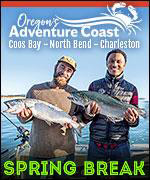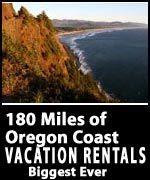What is This Annoying Domoic Acid Stuff? And Why It's Affecting the Oregon / Washington Coast
Published 12/14/22 at 4:55 AM
By Oregon Coast Beach Connection staff
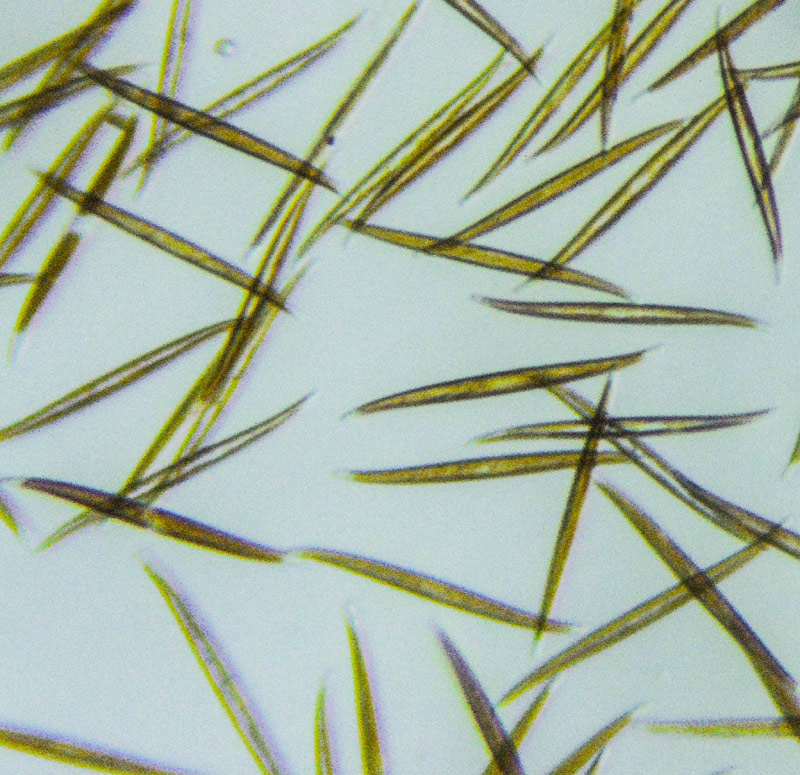
Includes exclusive listings; some specials in winter
In Cannon Beach:
Includes rentals not listed anywhere else
In Manzanita, Wheeler, Rockaway Beach:
Some specials for winter
In Pacific City, Oceanside:
Some specials for winter
In Lincoln City:
Some specials for winter
In Depoe Bay, Gleneden Beach:
Some specials for winter
In Newport:
Look for some specials
In Waldport
Some specials for winter
In Yachats, Florence
Some specials for winter
Southern Oregon Coast Hotels / Lodgings
Reedsport to Brookings, places to stay; winter deals
(Manzanita, Oregon) – Whether you realize it or not, an organic substance called domoic acid is all over the news these days, doing millions of dollars of damage to the fishing industries of the Oregon coast and Washington coast, and keeping you from some of your favorite activities on the beaches and from some seafood faves. (Photo above: Pseudo-nitzschia under a microscope, courtesy Seaside Aquarium)
In short, the stuff is raining on your parade.
Domoic acid is the biotoxin that's wrecking the Dungeness crab industry right now (sort of the Pacific Northwest's holy grail of seafood) and it's locking up razor clamming in both states. It did so to an extreme degree a couple of years ago, shutting down crabbing and razor clamming for an extended period, because the stuff can make you violently ill if you consume those seafaring morsels that are infected with it.
Sadly, domoic acid is on the rise in our oceans, and it just may get worse in the coming years because of a changing climate.
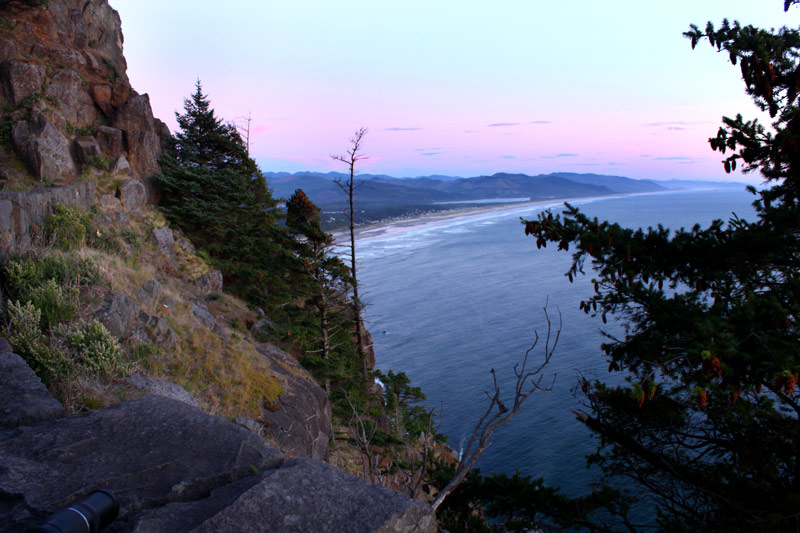
Above: Manzanita, photo Oregon Coast Beach Connection
What is domoic acid, and why is it so prevalent? What causes it? A lot of this comes down to a warming ocean, and that is an effect of climate change, according to National Oceanic and Atmospheric Administration (NOAA) and Oregon State University (OSU).
Seaside Aquarium recently released a little tutorial on the subject, providing some of the answers to what creates this nasty, pesky stuff. A kind of algae called Pseudo-nitzschia can produce it, said the aquarium's Tiffany Boothe, but there are 58 kinds of Pseudo-nitzschia out there and not all create the biotoxin.
“When conditions are right, this diatom can increase in numbers rapidly, producing blooms which can dominate the phytoplankton community for extended periods of time,” she said.
One estimate has the loss of the west coast Dungeness industry at over $100 million in 2015 alone.
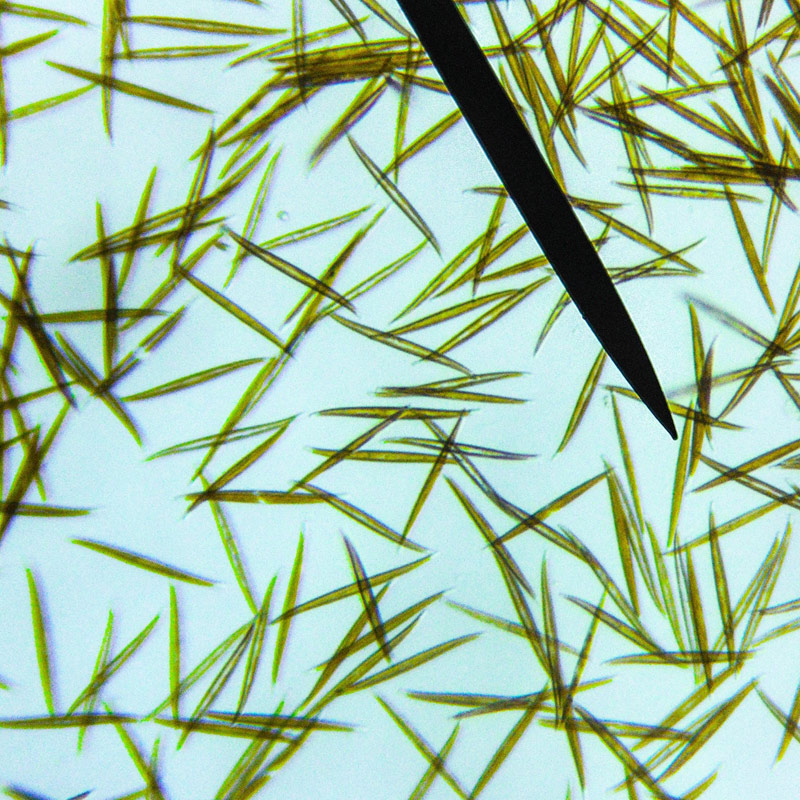
Pseudo-nitzschia under a microscope, courtesy Seaside Aquarium
Pseudo-nitzschia is just fine for shellfish and smaller fish – they actually feed on all kinds of diatoms including this one. The problem comes for larger creatures, and not just us. All kinds of mammals get sick because of the biotoxin in that algae or the smaller critters that they eat. Past blooms of this kind of diatom / algae resulted in a number of whales, dolphins, seals, porpoises and sea lions getting really sick in California just this past summer.
NOAA and OSU researchers say it's even caused mass deaths among those species.
Once it gets into humans, there's a name for it.
“It can cause a disorder called Amnesic Shellfish Poisoning (ASP) which can lead to vomiting, cramps, headache or sometimes more serious issues like memory loss, coma, and even death in some cases,” Boothe said.
For the smaller ocean beasties like clams it's actually more food for them. But it causes havoc with humans and their food.
Four people died from it in a large bloom event in the late '80s, prompting scientists and officials to start testing for it.
A joint NOAA and OSU study done a few years back showed domoic acid is increasing in frequency.
Morgaine McKibben was lead author in that study back in 2017, one which not only saw the connection to warming oceans but the team also offered up new ways of predicting a harmful algae bloom (HAB).
“We describe a completely new method to understanding and predicting toxic outbreaks on a large scale, linking domoic acid concentrations in shellfish to ocean conditions caused by warm water phases of natural climate event cycles like Pacific Decadal Oscillation (PDO) and El Nino,” McKibben said in a news announcement on NOAA's site.
Matt Hunter with the Oregon Department of Fish and Wildlife (ODFW) was a co-author on the study. He said the ability to predict such blooms based on climate predictions helps the agency get a little bit of a leg up on the situation along the Oregon coast.
He's also noted the climate-algae connection in recent years, pointing to that event from 2020 through 2021 when razor clamming was shut down on the north Oregon coast for over a year. Back then, ocean currents and winds became stalled due to a variety of weather conditions, boosting the chances for a HAB.
Those who oversee testing on shellfish from the Washington coast southward now have a hint of a warning system, giving state shellfish authorities a look at where and when they may need more testing resources.
Oregon Coast Hotels in this area - South Coast Hotels - Where to eat - Maps - Virtual Tours
Cannon Beach Lodging
Nehalem Bay Lodgings
Manzanita Hotels, Lodging
Three Capes Lodging
Pacific City Hotels, Lodging
Lincoln City Lodging
Depoe Bay Lodging
Newport Lodging
Waldport Lodging
Yachats Lodging
Oregon Coast Vacation Rentals
Oregon Coast Lodging Specials
More About Oregon Coast hotels, lodging.....
More About Oregon Coast Restaurants, Dining.....
LATEST Related Oregon Coast Articles
One little town - dozens of wowing attractions and distractions
A Luminous View Above the Oregon Coast Waters and Newport's Nye Beach
Inn at Nye Beach goes back a few decades, now steeped in luxury
Witnessing Oregon Coast History at Depoe Bay: What's Gone and What's Eternal
Landmarks now gone and other exceptional moments
Spring Cleanup in April Needs People - Including Oregon Coast
Between April 13 and April 22. Newport events, Lincoln City events, Pacific City events, Rockaway Beach events, events, Seaside events, Astoria events, south coast events
Florence, Oregon's Rhody Fest Gears Up for May's Big Start on Central Coast
117th edition for its run of May 16 to 19. Florence events
Cuteness Overload: Tufted Puffins Returning, Cannon Beach and N. Oregon Coast...
Annual Puffin Welcome Celebration on April 13th at Haystack Rock. Cannon Beach events
Coos Bay Summer Fests: UTV's, Tacos, Margaritas and Classical on S. Oregon Coast
Summer in Coos Bay means crazy, cool and cultured. Coos Bay events
Lincoln City's New Brewery Trail Allows Digital Discovery of Oregon Coast Beers
Tap and Brew Trail lets you explore beverages and win
Back to Oregon Coast
Contact Advertise on Oregon Coast Beach Connection
All Content, unless otherwise attributed, copyright Oregon Coast Beach Connection. Unauthorized use or publication is not permitted














